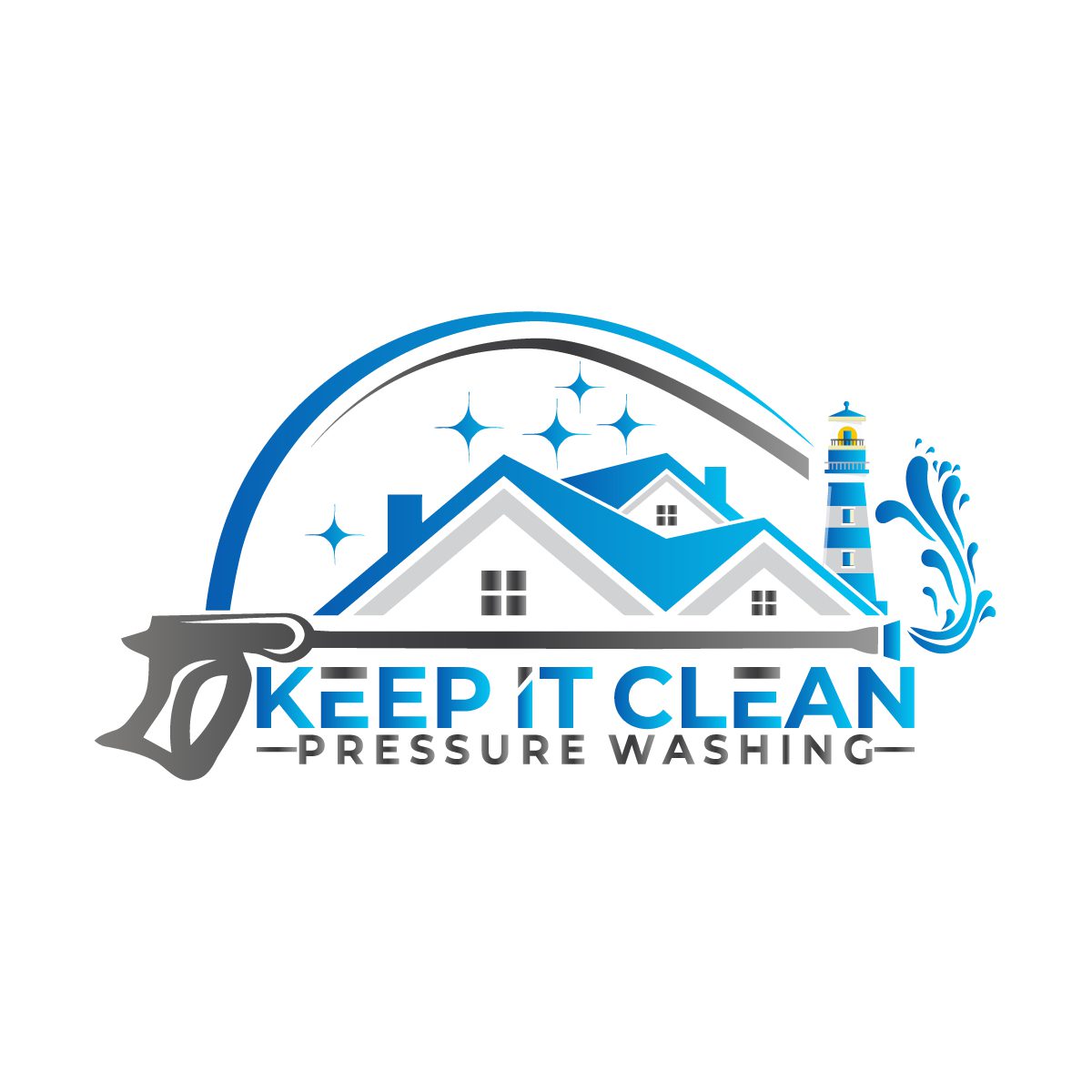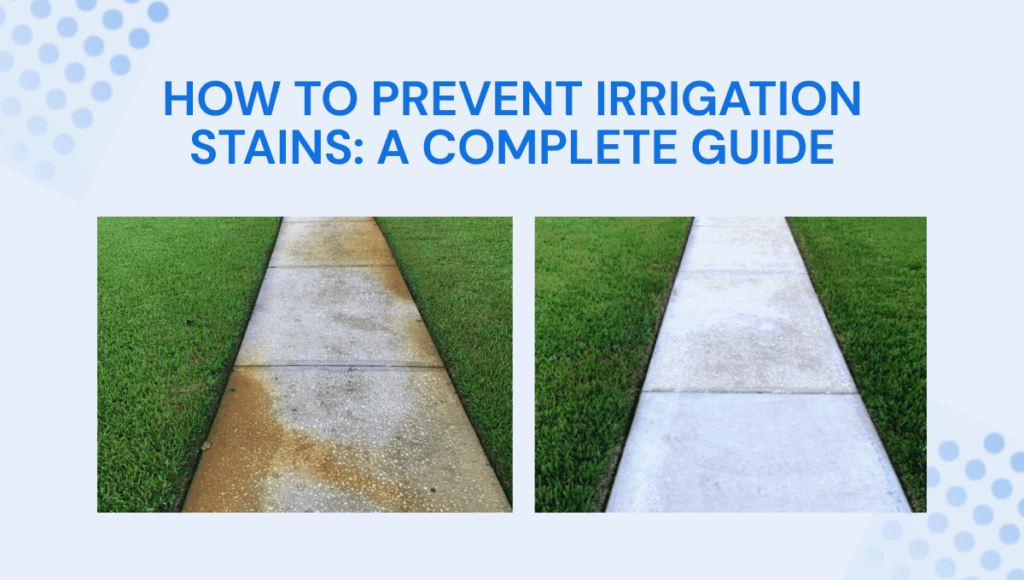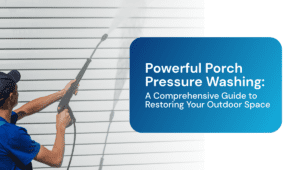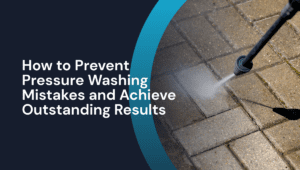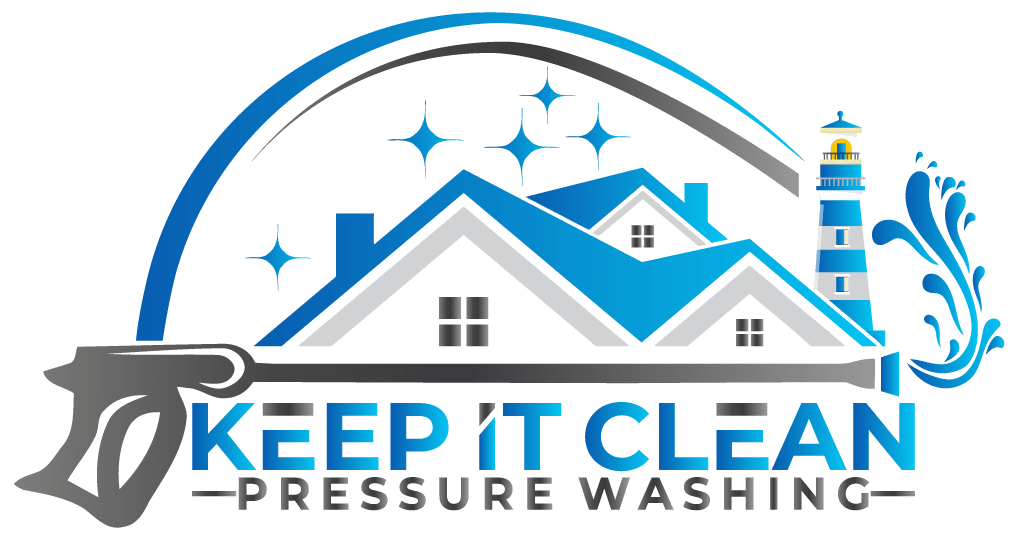Irrigation staining occurs when water containing minerals, such as iron and manganese, comes into contact with surfaces and leaves behind unsightly discoloration. These stains can appear on driveways, sidewalks, walls, and other outdoor structures, diminishing the aesthetic appeal of your property. Fortunately, understanding the underlying causes of irrigation staining and implementing preventive strategies can help you avoid these stains and keep your outdoor spaces looking clean and inviting.
What Causes Irrigation Staining?
To effectively prevent irrigation stains, it’s essential to understand the factors that contribute to their formation. Common causes of irrigation staining include:
High Mineral Content in Water: Water from irrigation systems often contains high levels of minerals, such as iron and manganese. When this water comes into contact with surfaces and evaporates, it leaves behind mineral deposits that can stain surfaces.
Overwatering: Excessive watering can exacerbate irrigation staining by increasing the frequency and volume of water that comes into contact with surfaces. As water evaporates, it leaves behind concentrated mineral deposits, leading to more pronounced stains.
Poor Water Quality: Water from wells or municipal supplies may contain impurities and contaminants that contribute to irrigation staining. These impurities can react with surfaces and minerals in the water, accelerating the formation of stains.
Inadequate Drainage: Poor drainage around irrigation areas can result in standing water, which allows mineral-laden water to pool and accumulate on surfaces. Over time, this stagnant water can lead to persistent staining.
By addressing these underlying causes and implementing preventive measures, you can minimize the risk of irrigation staining and preserve the appearance of your outdoor spaces. In the following sections, we’ll explore effective strategies for preventing irrigation stains and maintaining a pristine landscape.
Which Other Problems Can Iron Cause?
Iron is an essential mineral for human health, playing a vital role in various bodily functions such as oxygen transport and energy production. However, when it comes to external environments, iron can sometimes be a source of concern, particularly in the context of metal objects and infrastructure. Rust, a common byproduct of iron oxidation, can lead to a range of problems, especially in systems like lawn irrigation. Let’s explore some of the other issues that iron, and its resulting rust, can cause in different contexts.
1. Corrosion in Metal Structures:
Iron, when exposed to moisture and oxygen, undergoes oxidation, forming rust. This process, known as corrosion, weakens the integrity of metal structures over time. In industrial settings, such as bridges, pipelines, and machinery, corrosion caused by iron can lead to structural failure and safety hazards if not addressed promptly.
2. Contamination of Water Sources:
In areas with high iron content in the soil or groundwater, iron leaching can occur, leading to the contamination of water sources. Elevated levels of iron in drinking water not only affect its taste and odor but can also cause staining of fixtures and laundry. Furthermore, excessive iron intake from contaminated water may have adverse health effects, particularly on the digestive system.
3. Damage to Agricultural Equipment:
Farming machinery and equipment often contain iron components susceptible to rust formation. Exposure to moisture and environmental elements can accelerate the corrosion process, compromising the functionality and longevity of agricultural tools. Rusty equipment not only hampers farm productivity but also poses safety risks to operators.
4. Degradation of Automotive Components:
Iron-based components in vehicles, such as brake discs, exhaust systems, and chassis, are susceptible to rusting, especially in regions with harsh weather conditions. Rust accumulation on these automotive parts not only diminishes their performance but also compromises vehicle safety and longevity. Regular maintenance and rust prevention measures are crucial to preserving the integrity of automotive systems.
5. Deterioration of Infrastructure:
Public infrastructure, including roads, bridges, and utility poles, often contains iron-based materials susceptible to corrosion. Rust-induced deterioration of infrastructure components not only compromises structural integrity but also poses significant safety risks to the public. Timely inspection, maintenance, and corrosion prevention strategies are essential for preserving the reliability and safety of infrastructure systems.
6. Environmental Impact:
The environmental impact of iron corrosion extends beyond localized damage to ecosystems and natural habitats. Rust runoff from corroded structures and equipment can contaminate soil and water bodies, affecting plant and aquatic life. Additionally, the energy and resources required for repairing or replacing corroded iron-based infrastructure contribute to environmental degradation and carbon emissions.
Consider Your Irrigation System’s Water Source
Ensuring the quality of water used in your irrigation system is essential for maintaining the health and vitality of your lawn and plants. One crucial aspect to consider is the presence of iron, which can lead to issues such as rust stains, clogged sprinkler heads, and impaired plant growth. Here are two key steps to take when assessing the iron content in your irrigation water source:
1. Check the Water’s Color
When inspecting your irrigation water, pay attention to its color. High levels of iron can cause the water to appear reddish-brown or yellowish. If you notice any discoloration, it may indicate the presence of iron particles and potential rust contamination in your water source. Checking the water’s color is a simple yet effective way to identify rust and other impurities in your irrigation system.
2. Test the Iron Levels
For a more accurate assessment of iron levels in your irrigation water, consider conducting a formal test using water testing kits or professional laboratory services. These tests measure the concentration of iron ions present in the water, providing valuable insights into the extent of iron contamination and the potential impact on your irrigation system and plants.
By considering your irrigation system’s water source and taking proactive steps to assess iron levels, you can identify potential issues early and implement appropriate solutions to safeguard your lawn, plants, and irrigation infrastructure. Whether it’s filtering out rust particles or adjusting irrigation practices to mitigate the effects of iron contamination, addressing water quality concerns is crucial for maintaining a healthy and thriving landscape.
Change Your Irrigation Equipment If Necessary
Maintaining a functional and efficient irrigation system is essential for promoting healthy plant growth and preserving the aesthetic appeal of your landscape. However, if your irrigation equipment is plagued by rust or other forms of deterioration, it may compromise the effectiveness of watering and potentially harm your plants. Here are some insights on when and how to change your irrigation equipment if necessary:
1. Assess the Extent of Rust Damage:
Begin by inspecting your irrigation equipment for signs of rust accumulation or corrosion. Check components such as pipes, valves, sprinkler heads, and fittings for any visible rust stains, deterioration, or structural weaknesses. If the rust damage is extensive and compromises the functionality of the equipment, it may be time for a replacement.
2. Consider Efficiency and Effectiveness:
Evaluate the performance of your irrigation system in delivering water to your landscape. If you notice reduced water pressure, uneven distribution, or frequent clogs due to rust buildup, it indicates that your equipment is not functioning optimally. Upgrading to newer, rust-resistant irrigation components can improve water efficiency and ensure consistent watering across your lawn or garden.
3. Choose Rust-Resistant Materials:
When selecting replacement irrigation equipment, prioritize materials that are resistant to rust and corrosion. Look for options made from stainless steel, brass, or corrosion-resistant polymers, which are less susceptible to rust formation and offer greater durability in outdoor environments. Investing in high-quality, rust-resistant equipment can save you time and money on maintenance and repairs in the long run.
By proactively assessing the condition of your irrigation equipment and replacing any components affected by rust or corrosion, you can ensure efficient water delivery and prolong the lifespan of your irrigation system. Whether it’s upgrading to rust-resistant materials or investing in modern irrigation technology, making the necessary changes to your equipment can contribute to a healthier and more vibrant landscape.
Use a Rust Stain Prevention System
Preventing rust stains in your irrigation system is key to maintaining its efficiency and aesthetic appeal. By utilizing a rust stain prevention system, you can mitigate the risk of rust buildup and preserve the integrity of your irrigation equipment. Here’s how:
Install a Rust Stain Control System:
Consider installing a dedicated rust stain control system for your irrigation setup. These systems typically utilize specialized filtration or treatment methods to remove iron particles and prevent rust stains from forming on surfaces. By intercepting iron before it enters the irrigation system, you can protect your equipment and minimize the risk of staining.
How to Get Rid of Irrigation Stains
Before diving into stain removal techniques, it’s crucial to understand the root cause of irrigation stains. These marks typically result from mineral deposits or rust leaching from sprinkler systems onto surfaces such as concrete, brick, or siding. Understanding the source of the problem is essential for selecting the most appropriate treatment method.
Ready to tackle those stubborn stains head-on? Here are some proactive strategies to consider:
Utilize Vinegar and Water: Create a powerful cleaning solution by mixing equal parts white vinegar and water. Apply the solution directly to the affected areas and let it sit for several minutes before scrubbing with a stiff brush. Rinse thoroughly with water to reveal a clean, spot-free surface.
Invest in Commercial Rust Removers: Explore specialized rust removal products available at your local hardware store. Follow the manufacturer’s instructions carefully and wear protective gear when handling these potent solutions. With the right product and technique, you can effectively dissolve stubborn stains and restore your surfaces to their original condition.
Explore Oxalic Acid-Based Cleaners: For particularly stubborn stains, consider using oxalic acid-based cleaners. These powerful solutions are specifically formulated to dissolve rust stains and mineral deposits from concrete and other surfaces. Exercise caution and adhere to safety guidelines when using these cleaners to achieve optimal results.
Embrace the Pressure Washer: When dealing with large or deeply embedded stains, a pressure washer can be your best friend. Adjust the pressure settings and nozzle distance to avoid damaging delicate surfaces while effectively blasting away dirt, grime, and mineral deposits. With a little patience and precision, you can achieve professional-grade results right in your own backyard.
Preventing Future Stains
Prevention is key to maintaining a stain-free outdoor environment. Here are some proactive measures to minimize the recurrence of irrigation stains:
Regularly inspect and maintain your sprinkler system to ensure proper functionality and prevent leaks or overspray.
Consider installing drip irrigation systems or soaker hoses to deliver water directly to plant roots without splashing onto surfaces.
Apply a high-quality concrete sealer or water repellent to outdoor surfaces to create a protective barrier against moisture, minerals, and stains.
Get Help From a Rust Removal Service
In cases where rust stains persist despite your efforts to remove them, seeking professional assistance from a rust removal service may be the most effective solution. These professionals have the expertise and equipment to safely and efficiently remove rust stains from various surfaces, including concrete, metal, and irrigation equipment.
Don’t let rust stains tarnish the beauty of your landscape or compromise the performance of your irrigation system. By utilizing preventive measures, employing effective cleaning techniques, and seeking professional help when needed, you can keep rust stains at bay and enjoy a vibrant and well-maintained outdoor environment.
